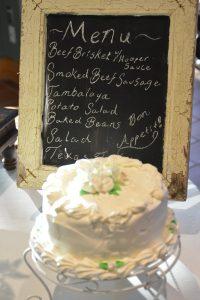How to Plan Your Book Quickly and Easily
August 15, 2017
Note From Rochelle
Dear Readers,
Today’s tip is the second in a series to help you design and create your book. Last week, I wrote about how to take advantage of the Fresh Start Effect to start a new project–and how to choose that project. Today’s tip will help you design that project.
Enjoy!
Rochelle,
the Write Now! Coach

How to Plan Your Book Quickly and Easily
by Rochelle Melander
My husband spent a month this summer studying in New York City, so I had the opportunity to take over his duties as the family chef. I’d rather bake muffins than whip up supper every day, and I had the additional challenge of learning a new eating plan. Despite all of this—the month went well. At the end, my kids like my food so much that they asked if I’d continue cooking. I’m not sure about that—but I do know one thing: I owe my success to a single choice I made early in the summer.
 I’d considered taking a cooking class or signing up for one of those awesome cooking box plans—but I didn’t. The secret to my success was simple if a bit boring: I planned. Every week, I made a menu and a grocery list—and mostly followed it. When schedules got crazy, I shifted meals around so that I’d be able to make a crockpot meal on busy days and be home on quieter days to prepare the more challenging dishes.
I’d considered taking a cooking class or signing up for one of those awesome cooking box plans—but I didn’t. The secret to my success was simple if a bit boring: I planned. Every week, I made a menu and a grocery list—and mostly followed it. When schedules got crazy, I shifted meals around so that I’d be able to make a crockpot meal on busy days and be home on quieter days to prepare the more challenging dishes.
I knew that planning would guarantee my success because I’ve used the same tool to write more than ten books. Here’s how you can use my method to plan your own book.
Clarify your topic.
You can’t judge a book by its cover—but most readers do select books based on the back cover copy. That blurb sells your book to both agents and readers. But before it does any of that, the blurb helps you write the book.
After you choose your topic and before you start writing, create a short blurb about your book. Use the blurb to stay on track during the writing process. For Write-A-Thon, the first sentence of my blurb was: “Write-A-Thon teaches professionals how to plan and write books fast.”
Use a formula like this to craft your first sentence:
This book will: verb [Choose a verb that indicates how your book will benefit the reader. E.g., teach, inspire] + a phrase that indicates what your book will do.
Then, tell us how your book will do this. Here’s part of my paragraph for Write-A-Thon:
This easy-to-use guide includes the life skills, performance techniques, and writing tools you need to complete your book quickly.
Gather content
You know your topic and how you want to approach it. Before you write, it’s helpful to record everything you know about the topic so that you’ll be able to create an outline. Here are three ways to gather content.
+Do a brain dump. Make a list or create a mind map of everything you want to cover in your book.
+Ask. Present your topic sentence or blurb to clients and colleagues and ask them what topics they’d like you to cover.
+Review. Do a web search of books and articles on your topic and see what they cover. What can you do to make your book different and better than these resources?
Get structure
A book structure is nothing more than a container for your ideas. When you clean out your clothes closet, you end up with stacks of stuff that need containers to hold them: shelves for shoes and a rod for your hanging clothes.
Take a look at your stacks of ideas from #2 and consider how you might best present this to a reader. Review 3-5 of your favorite books and consider how the book is structured:
+Does the book have sections?
+How many chapters are there?
+How long is each chapter?
+What kind of “pieces” does each chapter include—essay, callouts, sidebars, quotes, questions for discussion, and so forth.
Once you have a sense of what kind of book you like, sketch out the structure for your book.
Pro Tip: If you need help with this, check out my post on Five Book Formats for writing your book quickly and easily:
Create an outline
Don’t panic. I’m not talking about those long nasty things you had to do for college comp classes. An outline is simply a map of the main points in your book with extra details—the information you will be covering along the way. Let’s say you plan to write a collection of essays. Then your outline will simply be a list of each essay you plan to write. If you plan to include something extra, like a callout quote or a special story for each chapter, you could add those details to your outline.
Pro tip: Use the structure you’ve sketched out above along with the list of topics you created to create a simple outline. If you end up with leftover topics, keep them on a separate list. You may figure out a way to use them as you write—or they may make their way into an additional book!
Collect research
No doubt you can write much of your book without notes—it’s a part of who you are and what you do every day. But I’m guessing that some of your ideas will be boosted by additional information. Before you start writing, gather that information in one place. Take these steps:
+Create a computer folder and move research documents or previous writing on the topic into it.
+Create a bookmarks folder for your book so that you can easily store and access helpful sites.
+Gather hard copies of books and other research notes in one place.
+Make use of online tools to collect and organize research.
Next week we’ll talk about how to prepare your life to write this book! In the meantime, if you get stuck or need help with any of these steps, consider setting up a consultation or coaching session with me. I’ve helped dozens of clients write books to boost their business.
Note: An earlier version of this post appeared at Nina Amir’s site: Write Nonfiction Now! as How to Get Organized to Write Your Book Quickly









